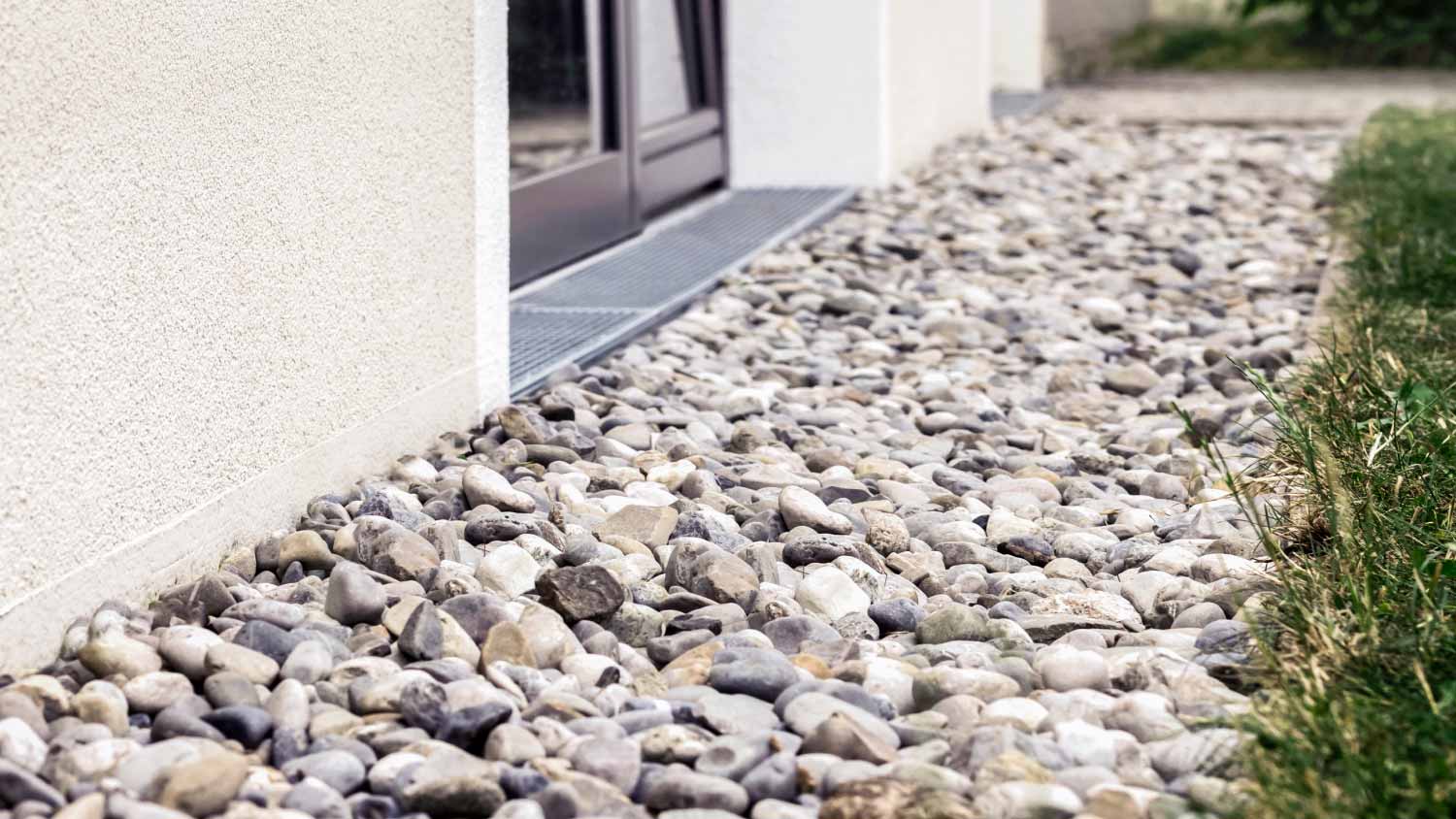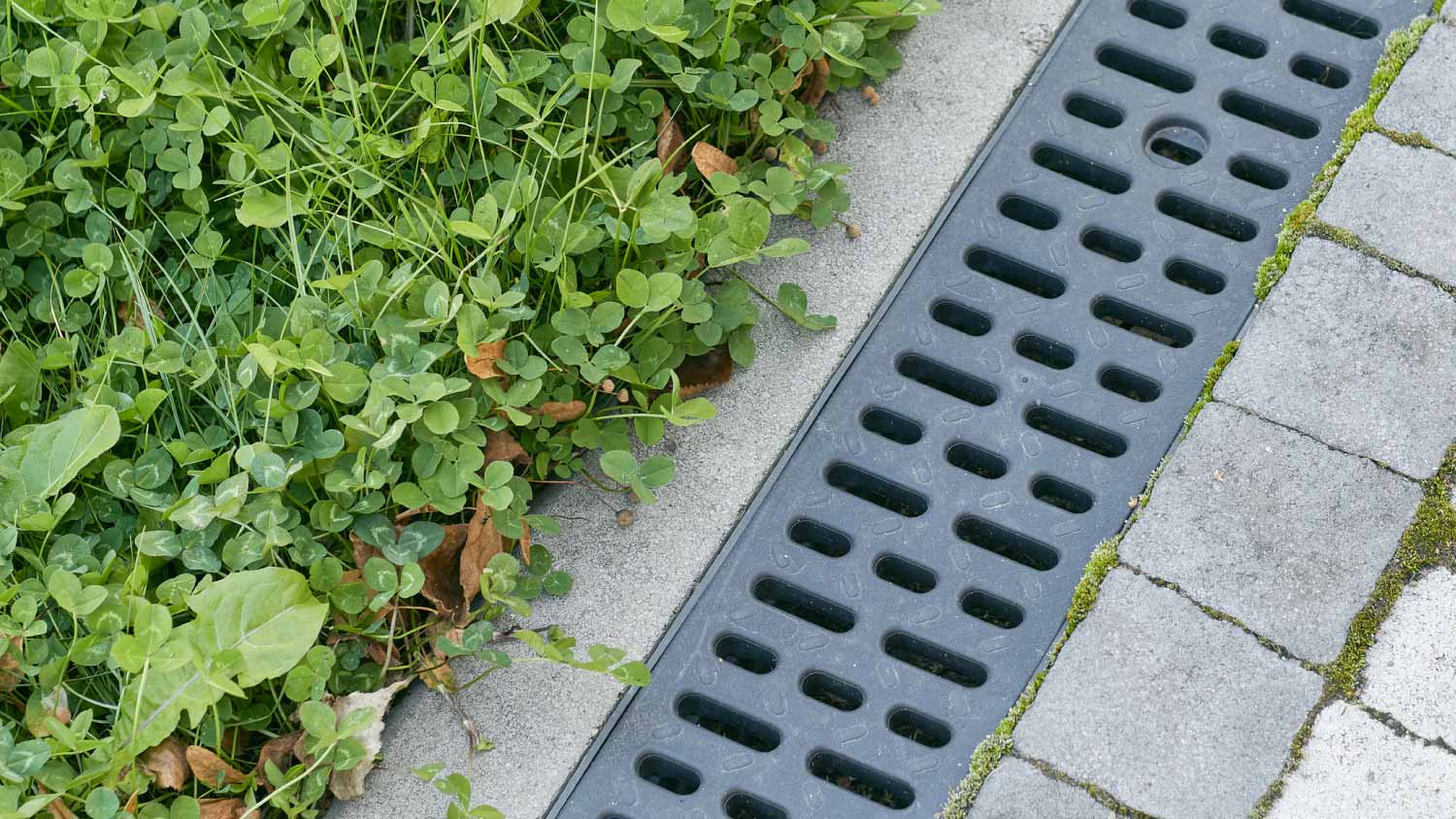
A French drain costs around $9,250 to install, but several factors will determine the final price you pay. Learn the cost to install French drains in this guide.
Compare these drain systems head-on


French drains are used for underground water while trench drains direct water above the surface.
French drains tend to be more affordable and allow your yard to be more accessible.
Trench drains are best for businesses or outside areas near pools or patios.
Trench drains are more customizable and aesthetically pleasing.
Which one you select depends on the needs of your yard.
Pooling water in your yard or near your home’s foundation is no laughing matter. If you live in a rainy area or are experiencing water drainage issues, you could benefit from a French drain or trench drain. When it comes to a French drain vs. a trench drain, there are a few key differences that can help you determine which is best for you. Our guide breaks down the pros and cons of each, when to hire a drainage specialist, and which is best for your home.
Although both systems are designed to remove excess water, French drains are used for water that’s underground while trench drains move water from an above-ground surface. French drains use underground pipes with a gravel embankment underneath to direct water from the home, while trench drains have a channel-style body that can collect solid materials.

A French drain uses an underground, perforated pipe to move excess water along a slope and through an exit point. Most French drains have gravel or rock underneath to help absorb the water and prevent pipes from clogging. This type of drainage system is used to prevent water from flooding areas or seeping into the foundation of homes or buildings.
| Pros | Cons |
|---|---|
| More affordable installation | Clogs easily |
| Works quickly | Difficult to install |
| Dries out yard | Requires regular maintenance |
Best for:
Homes with recurrent flooding or water pooling
Homes with existing foundation damage
Homes with vulnerable retaining walls
There are several advantages to installing a French drain, including its ability to move water away from your home efficiently. The average cost of a French drain is about $9,250 on average, depending on your specific needs and the size and scope of your drainage system. Lower-end French drains can cost about $500 to install, while more extensive drains can cost up to $18,000.
Once your French drain is installed, it starts working as soon as rain starts falling. Its efficiency is another perk, since you can customize it to direct the water to a sump pump, septic tank, or other collection site. With the excess water moving underground, you can enjoy more of your yard without the risk of stepping in puddles or attracting mosquitoes to pooling water.
The main con of a French drain is that it requires installation by a professional French drain company near you. The installation process includes labor-intensive digging and knowledge of existing utilities, such as water or gas lines. You also may need to remove pieces of sidewalk or patios, which a French drain expert will have the tools and experience to tackle.
Another disadvantage of French drains is that they can clog easily. Since the system is concealed, you likely won’t discover the clog until it’s already causing a problem or malfunctioning. That’s why it’s best to have regular maintenance performed on your French drain, especially after particularly rainy or snowy seasons.

A trench drain is an above-ground drainage solution with materials embedded into the ground and topped with a grated cover that often resembles a gutter. This alternative to a French drain connects to a local sewer or waterway so that it doesn’t disrupt its area’s ecosystem. The goal of a trench drain is to blend into its surroundings while directing water away from patios, pools, driveways, and sidewalks.
| Pros | Cons |
|---|---|
| Seamless appearance | Difficult to clean |
| Protects landscaping | Harbor bacteria |
| Drains solid materials | Tripping hazard |
Best for:
Business or facilities that need high-capacity drainage
Areas with low risk of contamination, such as loading or storage buildings
Trench drains are effective and often undetectable unless you’re looking closely for them. They can easily fit into an outdoor design scheme, which makes them more aesthetically appealing for businesses or well landscaped backyards.
Trench drains support existing landscaping as they collect excess water and debris and keep them from interrupting the current ecosystem. Speaking of debris, the gaps between grates allow trench drains to collect larger pieces of debris to keep them from damaging plants or soil after rainfall.
It may be an advantage in some instances, but the gaps between grates that allow trench drains to collect bigger pieces of debris can also be a downfall. The more the drain collects and the less it’s cleaned out or maintained, the more likely it is to contain harmful bacteria and become contaminated. This is why regular cleaning, which can become draining (pun intended), is necessary.
Trench drains are also more expensive to install than French drains. You can expect to pay $30 to $100 per linear foot to install this type of drainage system. The grating can also become damaged easily by heavy equipment or lawn tools like mowers or trimmers if you’re not careful.
From appearance to price and maintenance, review which option wins out to help you make the right decision.
Most French drains are concealed with rock, whereas a trench drain can fit seamlessly into the design of your yard, pool, or landscaping thanks to customization options. Most guests may not even notice the trench drain if its design and installation are done properly.
As mentioned above, trench drains offer a ton of customization so that they can fit into the aesthetics of your home or business. Have a patio that needs draining but don’t want your system to stick out like a sore thumb? Trench drains offer a wide range of decorative grates in various colors, shapes, and styles so that they can fit your existing outdoor vibe.
As long as it’s maintained regularly, a French drain can last 30 to 40 years, while a trench drain can fail in as little as 2 to 5 years if the wrong one is installed. Once they’re in place, French drains can prevent water damage for a longer period of time.
In most cases, French drains cost about $10 to $50 per linear foot to install. This is less expensive than a trench drain, which ranges about $30 to $150 per linear foot. Because most French drains are underground, their appearance is less of a factor and the main costs include labor to dig and cover up the piping.
Although both systems should be maintained regularly, French drains are mostly self-sustainable so long as they don’t get clogged. Trench drains, on the other hand, can contain odors and even become contaminated over time if they collect too much debris that isn’t cleaned out.
From average costs to expert advice, get all the answers you need to get your job done.

A French drain costs around $9,250 to install, but several factors will determine the final price you pay. Learn the cost to install French drains in this guide.

Find out the average sprinkler system repair cost, what impacts pricing, and how to save. Get transparent estimates to plan your sprinkler repair project.

Discover the cost to winterize a sprinkler system, including average prices, key cost factors, and tips to save. Learn what impacts your estimate and how to budget.

A clogged or dirty sprinkler valve can cause your sprinkler head to run even when it shouldn’t. Learn how to clean a sprinkler valve with a few tools.

Laying fresh sod on your lawn? Here’s how long to water new sod with sprinkler systems so that your yard is the envy of the neighborhood.

Overwatering your yard can affect the health of your plants by disrupting the underlying soil. So, how is over-irrigation damaging to soil? Let’s take a look.